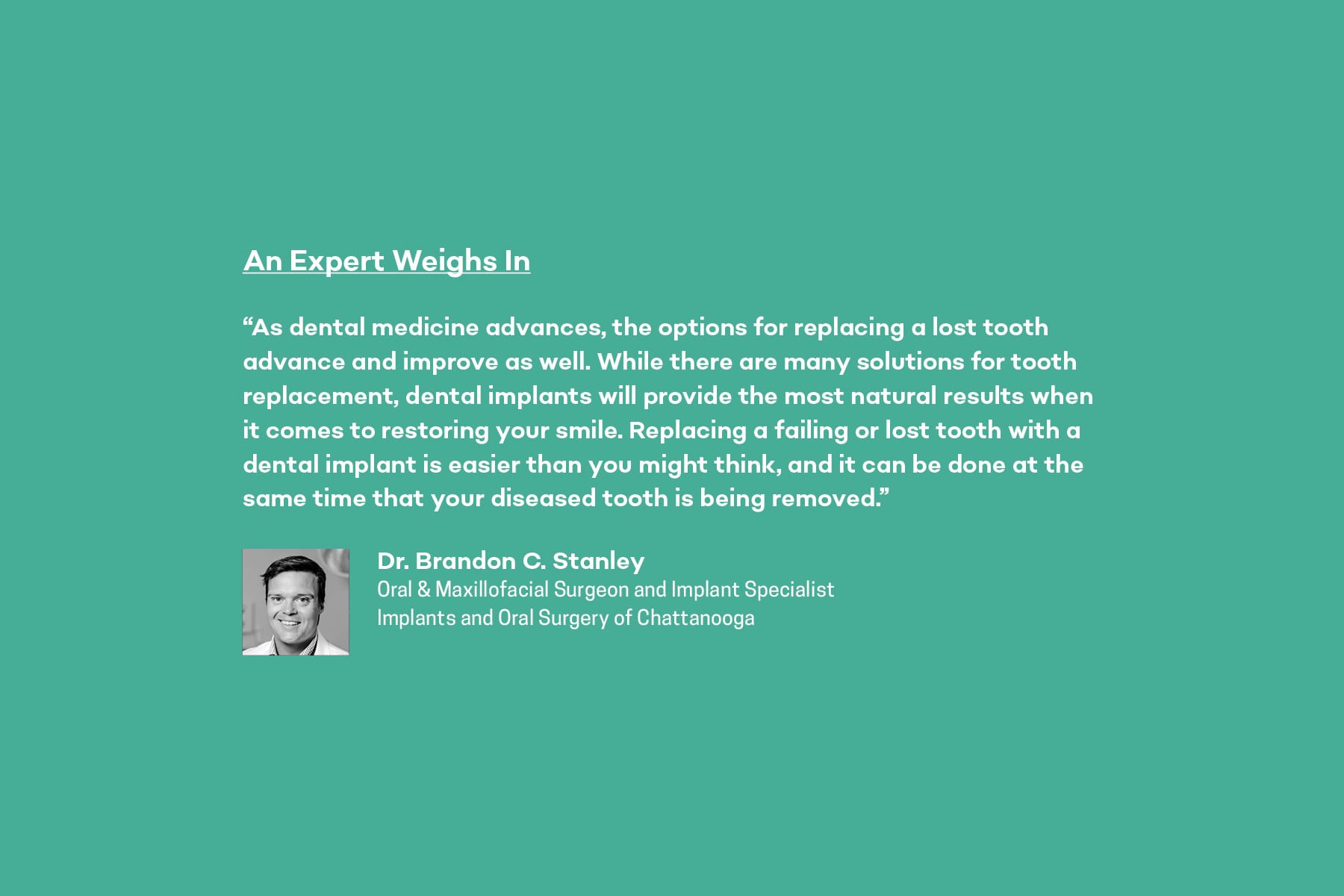Annual Oral Health Section
For someone looking to restore a smile suffering from decay or trauma, dental implants offer a permanent, fully functional solution.
Why Dental Implants Might Be Needed
The failure or loss of a tooth, which can be caused by gum disease, decay, or even trauma, can be a difficult thing to grapple with. Not only can it be detrimental to your self-esteem, making you self-conscious of your smile, but it can also do serious damage to the health and functionality of your mouth. Damaged or missing teeth can make it more difficult to eat and speak, as well as ultimately lead to degeneration of your remaining teeth, gums, muscles, and jawbone.
How Dental Implants Work
The purpose of a dental implant is to not only restore function to one’s teeth, but to restore their appearance as well. Dental implants are a permanent tooth replacement option that take the place of the missing tooth’s root, eventually grafting to the patient’s existing jawbone. A successful dental implant will rely on a healthy foundation of bone and soft tissue, some of which may need to be augmented, depending on the patient.
Advancements in Dental Implants
As surgical techniques and materials are advancing, it’s become easier than ever to remove a diseased or damaged tooth and follow that immediately with the placement of a dental implant. Temporary restorations are also available to place on the implant while patients wait for their permanent crowns, which can reduce worry about how your smile will appear in between those appointments.
What to Expect From the Procedure
When you go in for a procedure – either to remove the failing tooth, have an implant placed, or prepare for an implant with bone grafting – sedation can be done with local numbing medication or general anesthesia, if preferred. Procedures can often be done on the same day as the evaluation, with the entire process usually taking a few months. At the final stage, your oral surgeon will secure the permanent crown to your implant, fully restoring your smile. Improvements in digital technology and scans can now expedite the process and increase the predictability of the procedure, and the uncomfortable process of making manual dental impressions is often no longer necessary.


